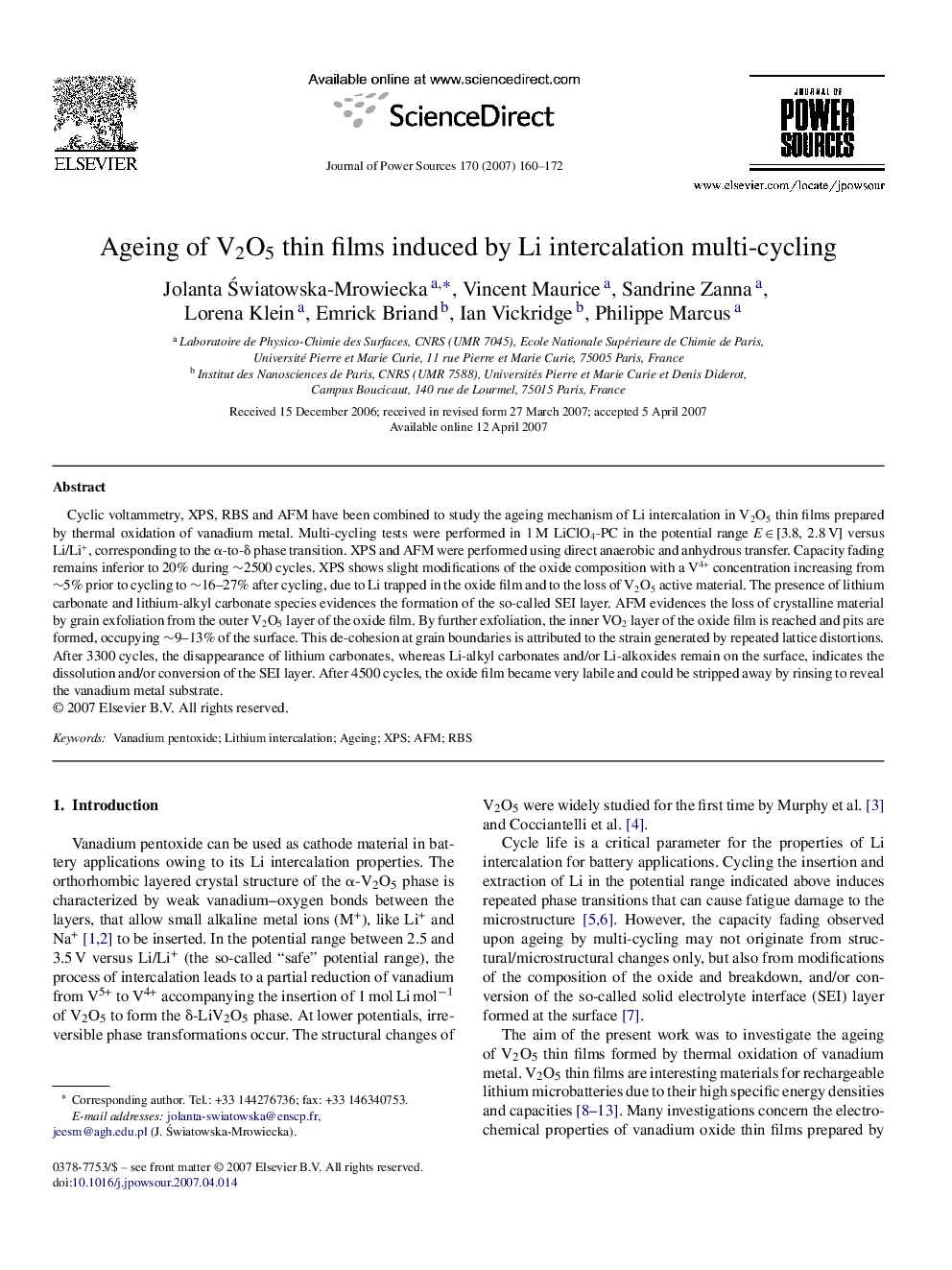| Article ID | Journal | Published Year | Pages | File Type |
|---|---|---|---|---|
| 1291385 | Journal of Power Sources | 2007 | 13 Pages |
Cyclic voltammetry, XPS, RBS and AFM have been combined to study the ageing mechanism of Li intercalation in V2O5 thin films prepared by thermal oxidation of vanadium metal. Multi-cycling tests were performed in 1 M LiClO4-PC in the potential range E ∈ [3.8, 2.8 V] versus Li/Li+, corresponding to the α-to-δ phase transition. XPS and AFM were performed using direct anaerobic and anhydrous transfer. Capacity fading remains inferior to 20% during ∼2500 cycles. XPS shows slight modifications of the oxide composition with a V4+ concentration increasing from ∼5% prior to cycling to ∼16–27% after cycling, due to Li trapped in the oxide film and to the loss of V2O5 active material. The presence of lithium carbonate and lithium-alkyl carbonate species evidences the formation of the so-called SEI layer. AFM evidences the loss of crystalline material by grain exfoliation from the outer V2O5 layer of the oxide film. By further exfoliation, the inner VO2 layer of the oxide film is reached and pits are formed, occupying ∼9–13% of the surface. This de-cohesion at grain boundaries is attributed to the strain generated by repeated lattice distortions. After 3300 cycles, the disappearance of lithium carbonates, whereas Li-alkyl carbonates and/or Li-alkoxides remain on the surface, indicates the dissolution and/or conversion of the SEI layer. After 4500 cycles, the oxide film became very labile and could be stripped away by rinsing to reveal the vanadium metal substrate.
